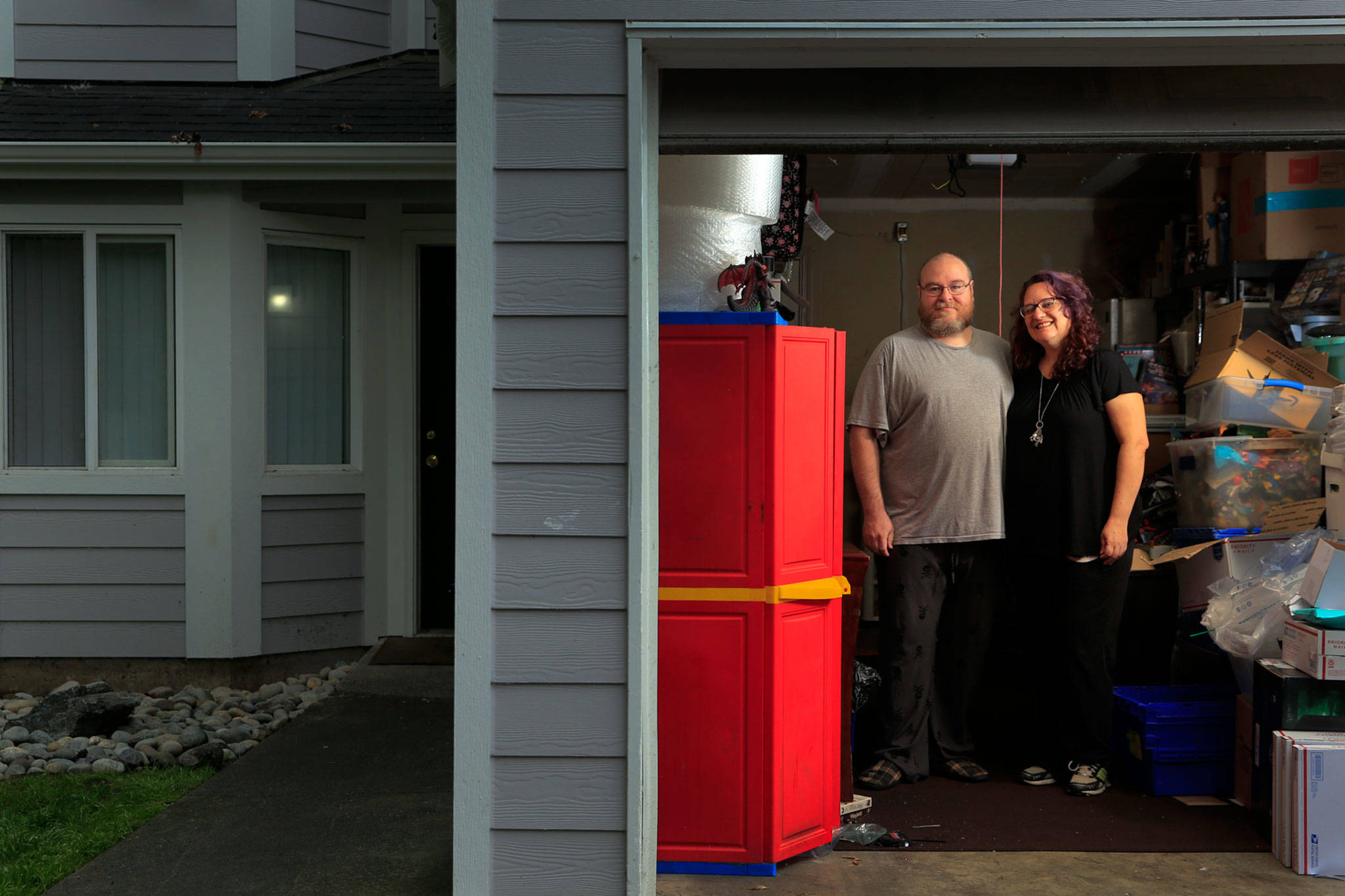LAKE STEVENS — Last Sunday, Christine Alcaraz received an alarming email from her landlord. If Alcaraz and her family want to extend their lease, rent will increase $475 per month.
“With the snap of a finger, we’re facing housing uncertainty,” said Alcaraz, who lives in a three-bedroom townhouse with her husband and three children in Lake Stevens.
Tenants all over Snohomish County are receiving similar notices. After more than a year of restrictions under the state’s eviction moratorium, landlords are no longer prohibited from raising rent.
Alcaraz said her notice included the option of a month-to-month lease for the price she’s been paying. However, she’s afraid that means the landlord could terminate her tenancy soon. Alcaraz doesn’t know if she can stomach that uncertainty. She also doesn’t know if her family can afford the rent increase.
“It’s humiliating,” Alcaraz said. “We’re not even poor. We’re your average household. My husband and I are both working, raising our kids, trying to have a normal life. It’s so frustrating.”
The Daily Herald reached out to readers through a social media post last week to ask about rent increases. Dozens of people shared their tales of sticker shock. They reported rent increases that ranged from $200 to almost $500 per month. Landlords, however, say they are recouping losses from the pandemic.
Rob Trickler, a landlord, attorney and president of Washington Landlord Association, said landlords are raising rents to market value.
In the past, Trickler said, many landlords avoided increasing rent to prevent vacancies. Keeping rent below market value meant landlords could keep their tenants. Now, the risk is too high to do that, Trickler said.
“Landlords were prohibited from raising rents for a year and a half, whether they were below market rates or not,” Trickler said. “It probably brought home the reality of what can happen if the rents get frozen at a below-market level.”
The explanation doesn’t bring much comfort to struggling renters. Many are now forced to make difficult choices.
In Alcaraz’s case, two of her children — who are 11 and 9 — may have to change schools if the family moves. She worries she may be forced to move to a school district with fewer resources.
“It feels like they are pushing everyone who has a lower income into a different neighborhood,” Alcaraz said.
According to research from the Joint Center for Housing Studies of Harvard University and the National Low Income Housing Coalition (NLIHC), many renters already spend more on housing than they can afford. On average, Snohomish County renters must earn $36.65 per hour to afford a two-bedroom apartment.
“That’s if you’re lucky to find one that is vacant and older,” said Mark Smith, executive director for the Housing Consortium of Everett and Snohomish County.
The consortium represents nonprofit housing developers, service providers, governments and nonprofits concerned with affordable housing issues. The consortium’s members typically focus on helping people who qualify for low-income housing.
“Every time rents increase, you’re adding more people to that pool who cannot afford market-rate rents,” Smith said.
About one-third of Snohomish County’s households are renters, according to a recent report from the NLIHC. In the cities, Smith said, the number is higher. Roughly 45% of Everett households are renters, Smith said. Many already spend more on housing than they can afford.
In 2016, Everett had 42,221 total households, according to a report from the Housing Consortium of Everett and Snohomish County. Of those, 15,581 were low-income households that spent at least 30% of their income on housing.
Everett renter Jena Pantano feels lucky her rent hasn’t increased. She and her boyfriend signed a lease earlier this year, she said. In the last month, Pantano has seen apartments in her complex listed for $800 more than the couple pays each month. Their two-bedroom, two-bath apartment is $1,530 per month, Pantano said. Now, there are one-bedroom apartments in the complex listed for $2,300. The highest rent Pantano saw for any apartment in the complex was just under $2,400.
If Pantano lived alone, roughly half of the income from her good-paying union job would go toward housing. With the couple’s combined incomes, however, they spend less than 30% on housing. They’re in the fortunate half of renters.
In the Seattle-Tacoma-Bellevue metro areas, 44.5% of renters spend more than 30% of their income on housing, according to the Joint Center for Housing Studies’ research. One out of every five renters in the same metro areas is severely cost-burdened, meaning they spend more than half of their monthly income on housing.
“When you’re a low-income renter, it doesn’t matter if your rent goes up by 5% or 25%,” Smith said. “You still can’t afford it.”
Katie Hayes: katie.hayes@heraldnet.com; Twitter: @misskatiehayes.
Katie Hayes is a Report for America corps member and writes about issues that affect the working class for The Daily Herald.
Talk to us
> Give us your news tips.
> Send us a letter to the editor.
> More Herald contact information.

























